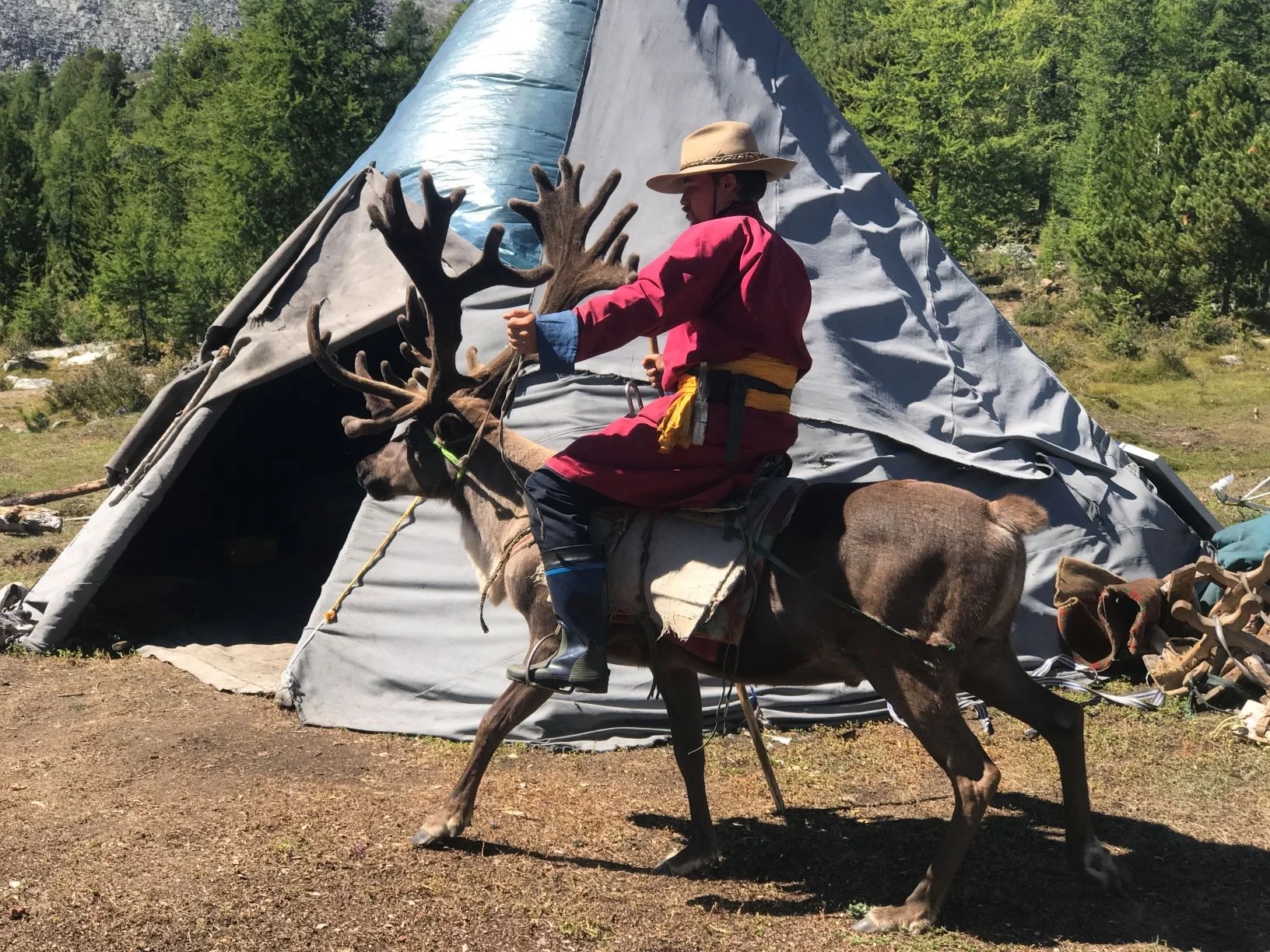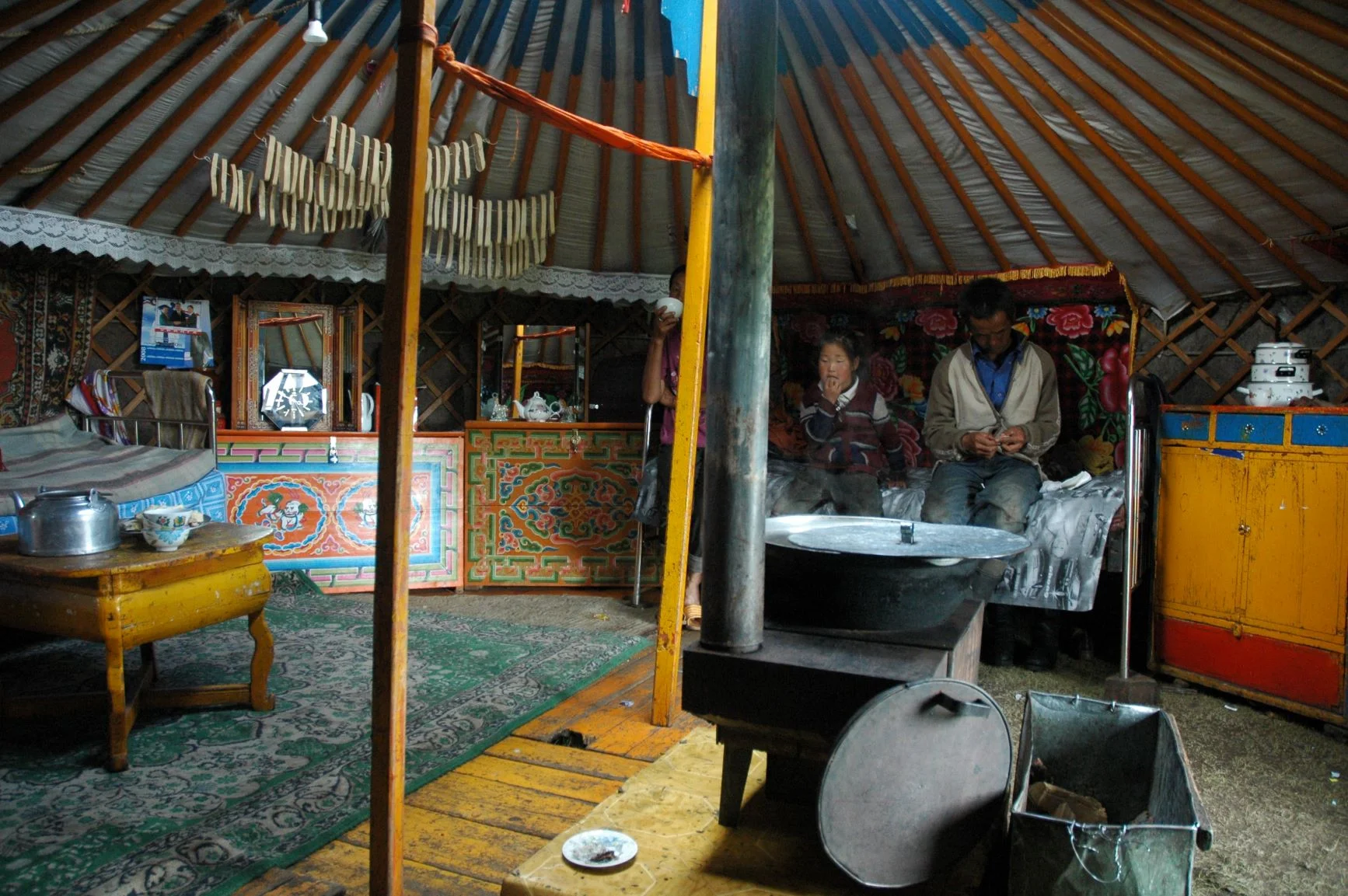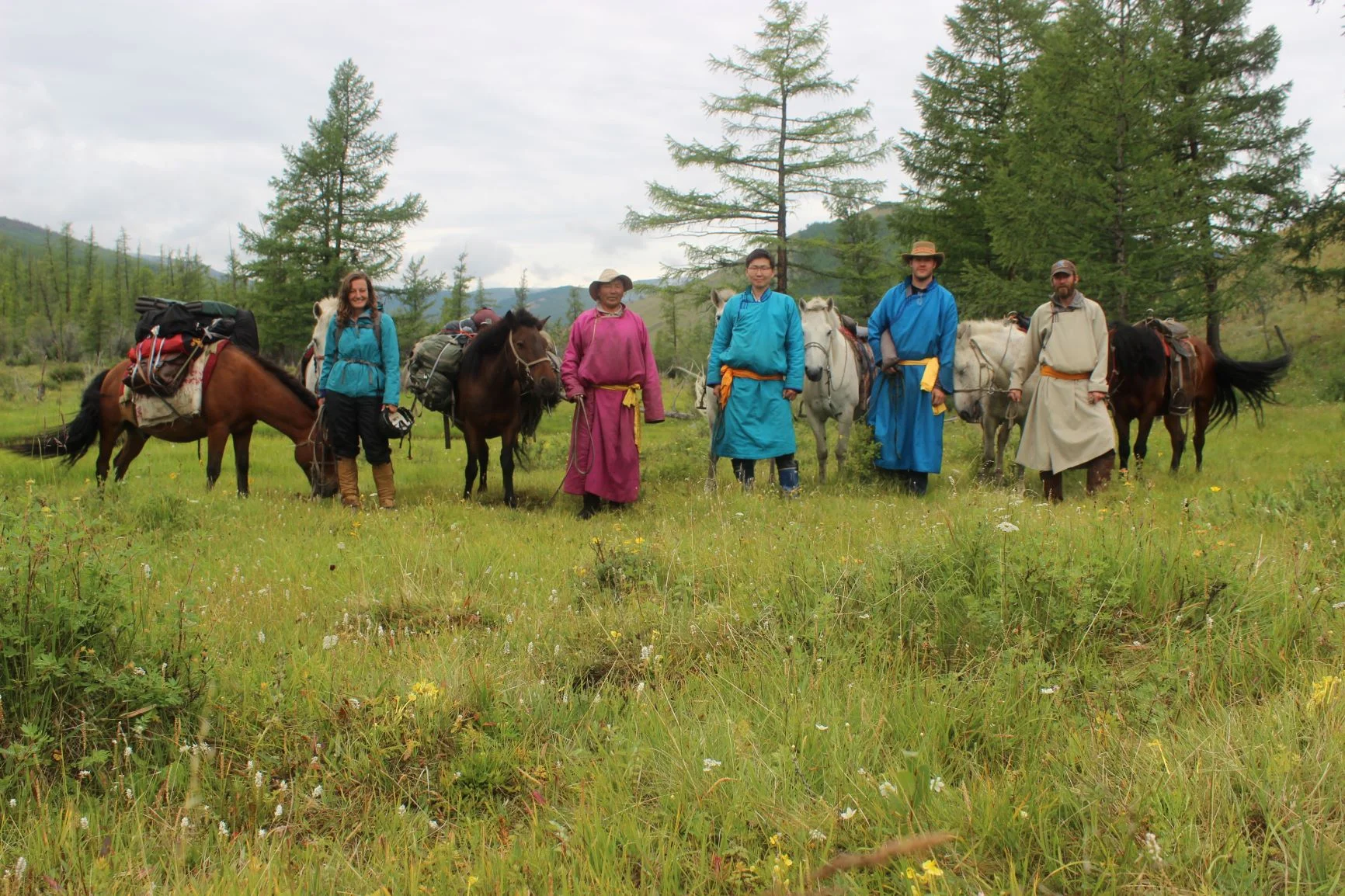
Friends
NOMAD Science is proud to work closely with local communities

Archaeology everywhere
From big monuments to little doodles, archaeology is seemingly everywhere in Mongolia

Outdoor education
Not a bad classroom environment!

Rainy Naadam celebration in Tsagaan Nuur
Even a rainy day can’t keep us down!

Immerse yourself
We’re serious about archaeology, but we’re also seroius about having a good time and immersing ourselves in the local culture

Excavation of settlement site
Understanding the ritual and domestic landscape is important to understanding the past

Beautiful campsite
Mongolia is challenging, but oh so worth it!

Heading out on survey
The crew relies on good survey data to understand site distribution on the landscape.

In-field artifact conservation and analysis
All those artifacts need to be cleaned, sorted, counted, and a basic analysis in the field

Science on horseback
Some of our programs travel by horseback to get to our locations

Collecting an Artifact on a Mountain Pass
The NOMAD Science team collects an artifact on a mountain pass that until very recently was covered in snow and ice year round.


Darkhad Depression
Once a large lake, around 15,000-20,000 years ago a natural damn broke releasing most of the water, leaving only small lakes and ponds in the bottom of the basin where NOMAD Sciene now conducts it’s research.


Reindeer Neighbors
This domestic reindeer wandered into our camp - what a great visitor!

Monastery Just before a Storm
The NOMAD Science team climbed up a long set of stairs to reach this monastery just before a storm hit near Jargalant, Huvsgul.

Excavations at Soyo Archaeological Site
This site of Soyo in northern Mongolia is a unique and particularly rich archaeological site in Mongolia where we have been researching at least 10,000 years of nearly continuous occupation.

Khirigsuur - Late Bronze Age Burial
These complex stone features mark 3,000 year old burials across much of Mongolia. The central cist contains a human body while the outer stone mounds and circles contain horse heads, hooves, and the cremated bones of other domesticated animals. They can range in size from a handful of meters, to nearly half a kilometer in length!

Teamwork and a Positive Attitude
Things are not always easy in Mongolia - but that challenge is also a big part of the reward for working in this beautiful land. NOMAD Science team members have to be up for adventure and keep a positive attitude - even when the truck gets stuck in the river and we have to help unload it to get it out!

Screening with a view

Deerstone Carving
Around 3,000 year ago, large carved stones known as Deerstones were erected around Mongolia likely to commemorate warriors. Here you can see the detail of the carvings - a dear with flowing antlers and a beak-like, elongated nose.

Riding a Reindeer
A NOMAD Science member tries his hand at riding a reindeer. While not as strong as horses, there are some marshy landscapes in the high taiga areas that they can navigate and traverse much easier than other kinds of mounts.

Mongolian Wrestlers at a Local Naadam
Two wrestlers grapple at a local festival in northern Mongolia.

Summer Snow Fields and Crystal Clear Streams
In the high mountain areas, snow and ice fields may hang on through the summer continuously feeding the many cold streams that cut through the landscape. Global climate change is shrinking these and having an impact on archaeology, hydrology, erosion, and many other cultural and natural systems.

Learning about Looting
NOMAD Science team members investigate the impact of illegal looting on a 3,000 year old burial in northern Mongolia.

Ovoos
These contemporary colorful markers inhabit many mountain passes and other important places in the landscape and are an important part of modern Mongolians’ spiritual lives.

Gaining Professional Skills
NOMAD Science prepares students by teaching them skills critical to their professional development in archaeology and other field sciences.

Horse Skull Incorporated into Modern Feature
NOMAD Science uses ethnographic fieldwork to inform our archaeological research. Understanding how people today use and relate to their environments, animals, and each other can help us understand how people in the past may have done so.

Horseman Crossing River
NOMAD Science teams live and work closely with local communities.

Motorcycles and Horses
While cars and motorcycles are becoming more and more common, people still travel by horse regularly. Horse racing, done by children, is an important part of the summer Naadam festival.

Festival Attendees in Deels
A traditional mongolian outfit is knows as a “deel” and comes in a variety of beautiful colors and styles for both men and women.

Breathtaking Landscapes
It can be hard to take a bad picture in Mongolia between the beautiful landscapes and dramatic weather.

Historical Bugghist Rock Paintings
The team inspects historical Buddhist rock paintings to help monitor their preservation.

A Bridge in the Last Minuts of Daylight
Just before sundown, the team reached this bridge and grabbed dinner at a small roadside restaurant on the way to the field site.

Yaks by a Reflecting Pool
Yaks are particularly playful and picturesque residents of the Darkhad Depression, here posing by a pool of still water reflecting the bright blue sky.

Field School Friends and Colleagues
Traveling around Mongolia with NOMAD Science builds friendships and collaborations.



White reindeer tied to corral








Main Camp at Soyo
While working at the archaeological site of Soyo, we set up a cozy little base camp where we work, play, and rest.

Camel's Grazing
These domesticated camels are used to help families move their possessions several times a year.

Archaeologists Salvage a Looted Grave
The NOMAD Science team has recorded hundreds of looted graves and is working to salvage the material left behind by looters.


Campfire at the End of a Long Day
Who doesn’t love a campfire? We sometimes relax and socialize around a campfire to mark the end of another great day in northern Mongolia.




Inside a Mongolian Ger
Traditional Monoglian homes, called gers are quite cozy inside.

Bronze Age Deerstone at Sunset
This is a Bronze Age Deerstone, a classic Mongolian archaeological feature.


Instruction in the Field
Students of NOMAD Science learn important professional skills in field sciences.



Site Tour at Soyo
Directors of NOMAD Science, Drs Julia Clark and J. Bayarsaikhan, give a site tour to new participants of the project.



Horidol Saridag Mountains
The Horidol Saridag Mountains are impressive and culturally important landmarks in Mongolia and make up the south-eastern boundary of the Darkhad Depression where most of NOMAD Science’s research takes place.












Horse Riding
Sometimes for fun, and sometimes for science, getting around by horse is a common mode of transport.






























































































